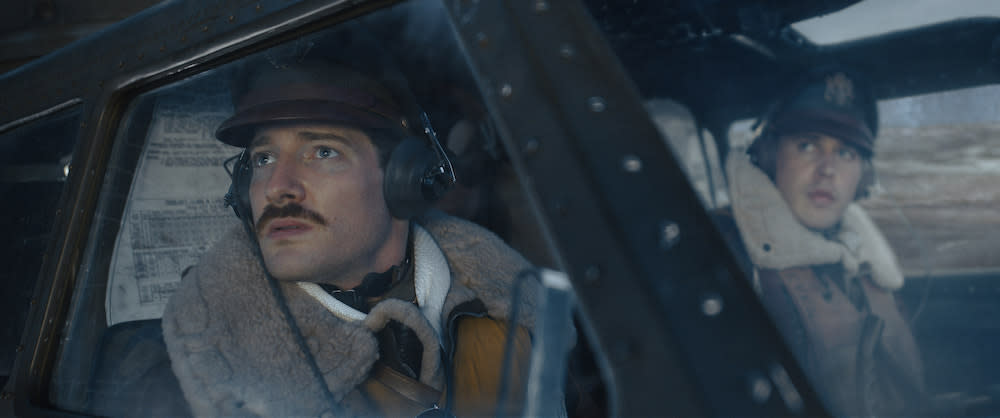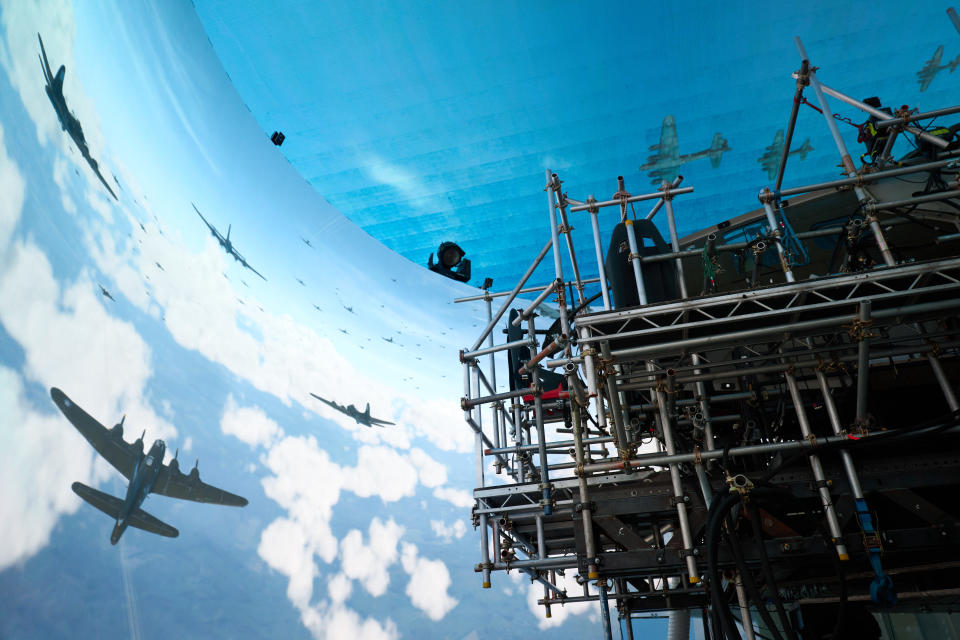Watch How ‘Masters of the Air’ Employed 3,447 Visual Effects Shots to Make Its Story Soar

- Oops!Something went wrong.Please try again later.
When writer John Orloff took on the task of turning historian Donald L. Miller’s “Masters of the Air” into a series for Apple TV+, one task was paramount: putting the audience in the shoes of the Air Force pilots whose World War II exploits were documented in Miller’s book. “We all know what infantry combat looks like,” Orloff told IndieWire’s Filmmaker Toolkit podcast. “We haven’t really seen what these air bomber combat missions were really like.” Knowing that authenticity, both in terms of historical detail and visceral emotional experience, would be key, Orloff turned to visual effects supervisor Stephen Rosenbaum to bring the era and action to life. Although Rosenbaum is known for his groundbreaking work in the fantasy realm on films like James Cameron’s “Avatar,” for “Masters of the Air,” he adhered strictly to reality.
“Our primary mission for ‘Masters of the Air’ was to ensure the visual effects recreated a historically accurate depiction of the contributions and devastating experiences within the 100th Bombardment Group,” Rosenbaum told IndieWire. “From combat flight formations, aerial assault tactics, and numerous period-correct geographical environments, the visual effects reproduced a visually truthful recounting of how it all appeared during the War, even down to specific plane serial numbers.” Rosenbaum’s task was made particularly daunting by shooting throughout the height of COVID, which meant the visual effects workload doubled in scope and complexity to more than four hours of shots — 3,447 in total — completed at 5K.
More from IndieWire
“We recreated chronicled air battle sequences with tactically correct animations that typically involved hundreds of American and German planes amongst volumetric clouds, sky-scapes, and simulated atmospheric and pyrotechnic effects,” Rosenbaum said. “We also meticulously constructed more than 90 unique environments and landscapes, including three German POW camps, three airbases, three German and three Dutch villages, the entire Toulon peninsula, the Paris skyline, bombed Nuremberg streets, the Norwegian coastline, and bomb-targeted cities such as Trondheim, Regensberg, Münster, and Berlin. Many of these environments also had to be populated with hundreds of digital humans.”
When it came to the planes themselves, the filmmakers had two full-scale practical B-17 models that could be used as static or slow-moving planes, but all take-offs and flying planes had to be visual effects. “There was no air-to-air plane photography,” Rosenbaum said. “The enormous density of VFX assets and intricate choreographies of the battle sequences intercutting with live action demanded a more cohesive and flexible on-set workflow. For interior angles, sectioned set pieces of the B-17 were built and positioned atop heavy-duty motion bases and then surrounded by huge LED walls that displayed live, fully 3D visual effects content controlled in real-time. Using a manual puppeteering device, the motion bases would “fly” the plane sets and react to action on the walls, effectively creating an interactive flight simulator.”

The LED walls gave the filmmakers maximum flexibility. “Each episode director had the capability to edit, alter, and retime all the visual effects content outside the plane set windows, including lighting, weather, and FX,” Rosenbaum said. “As an example, on the LED wall, we could dynamically fly a German fighter plane to attack the B-17 set, complete with tracers, shrapnel, fire, and smoke. In response, the actors could follow the action and the B-17 set could be jolted and jostled accordingly. This bolstered actor performances where eyelines and reactions could track the exterior action and also gave interior plane components life as they jiggled and swayed in the background. Like any non-VFX setup, the camera operators also could compose and respond more organically to the entire action they saw through the lens.”
The end results are stunning and, as Orloff notes, stand up to the scrutiny World War II buffs apply to each episode. “Stephen did the first ‘Avatar,’ and on that, no one is going to say, ‘Hey, you know the wing on that dragon doesn’t look right,’ because it’s all fantasy,” Orloff said. “Here, everything’s got to play and feel three-dimensional in a way that we recognize as real.”
Best of IndieWire
Every Palme d'Or Winner from the Cannes Film Festival, Ranked
The 13 Best Thrillers Streaming on Netflix in May, from 'Fair Play' to 'Emily the Criminal'
The Best Father and Son Films: 'The Tree of Life,' 'The Lion King,' and More
Sign up for Indiewire's Newsletter. For the latest news, follow us on Facebook, Twitter, and Instagram.

